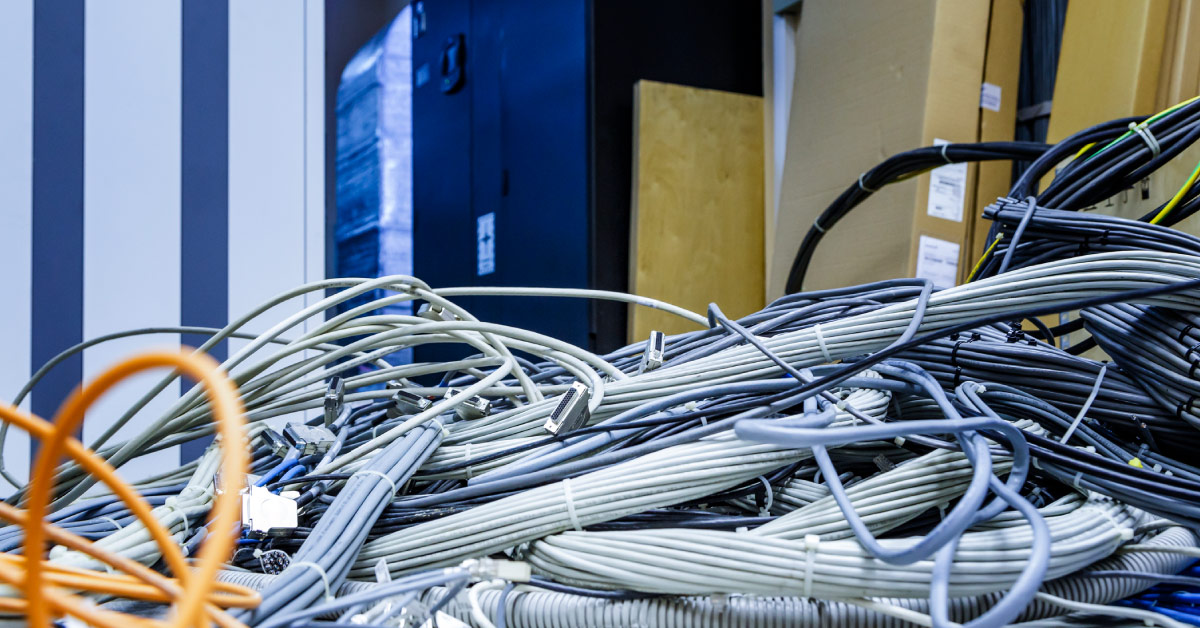Most businesses have been through a number of tough changes in the past few years. So if you’re still clinging to a legacy phone system, I get it! But you know that expression — don’t throw good money after bad? There comes a point where maintaining an old system is going to cost you more than it’s worth.
In this blog, I’ll try my best to clarify when it’s time for an upgrade and why holding on to an outdated phone system — even if it’s in perfect working order — is going to cause problems.
Frequent Issues Associated With Older Business Phone Systems

There is no single piece of technology that is built to last forever. But if your office uses handsets that are over ten years old, your phones might be circuit-card-based. Unfortunately, circuit-card-based phones have a shorter shelf life.
Some of the most common issues that plague older phone systems include:
- Buttons that stick or stop responding when pressed
- Issues with static during conversations
- Volume problems
- Handsets that just stop working altogether
- The system isn’t compatible with newer accessories like headsets
- There are no options for softphones or mobile apps to allow remote working
No Easy Fix
The most common approach when older phones start malfunctioning is to simply apply a band-aid. Employees often decide to just put up with sticky buttons or use another phone in a quieter room if there are volume/static issues. Some businesses limp along for months or years with malfunctioning phone systems because it’s not easy to get them fixed.
Unfortunately, the older the phone system and the rarer the components, the harder and costlier the fix will be.
5 Other Shortcomings of Legacy Phone Systems

Even if your legacy phone system is in near-mint condition, it’s not capable of keeping up with modern phone systems.
Here are five shortcomings that are tough to argue with:
1. Lack of Flexibility and Scalability
Legacy phone systems are typically on-premises hardware systems that are difficult to expand as your organization grows. Adding new phone lines, features, and extensions to legacy on-premise hardware systems requires expensive hardware and IT work. Cloud platforms, on the other hand, make it unbelievably easy to scale up or down.
2. Limited Features
Traditional phone systems usually lack modern features like video conferencing, mobility, advanced call routing/management, and intelligent call handling, which can restrict your ability to streamline communication and workflows.
3. High Operating Costs
Not only is maintenance time-consuming and expensive, but older systems also consume more energy. Cloud-based solutions won’t require PBX hardware that’s constantly running, so making the switch can help you save money on your utility bills.
4. Integration Difficulties
Because traditional business phone systems run proprietary protocols instead of software APIs, integrating them with modern software platforms like cloud apps, mobile devices, and AI assistants is very difficult — if not impossible.
Not only does that hold your team back when they’re in the office, but it also makes it very difficult to accommodate remote and hybrid work.
5. Reliability Issues
No phone system is 100% reliable, including those old copper POTS lines. VoIP and other communication solutions have come a long, long way in terms of call clarity and reliability, and include better backup and redundancy capabilities. Believe it or not, VoIP technology is now more reliable than a traditional landline.
When To Upgrade Older Phone Systems

It’s understandable that many businesses want to get as much life out of their technology as they can. But there are a few specific instances where I’d recommend upgrading communication tools sooner rather than later.
Repair Costs Are Climbing
If you’re already noticing that your repair costs are going up, not only is that a telltale sign you need to upgrade, but there may soon come a day when you can no longer get a qualified technician who understands your system and how to fix it.
There’s perhaps never a great time to have to spend money on something you didn’t necessarily want to upgrade, but there is a bad time, and that’s when it’s an emergency.
The Timing Is Right
If you’re adding a new location or moving, do yourself a favor — don’t put good money into bringing your old legacy phone system along for the ride. And if your contract is up for renewal, it’s always a great time to find out if you could get a better value with a different solution. And if you have an older business phone system, the answer is yes!
If you want a quick check-up to see if your carrier is still offering you the best value, our experts can help! Feel free to contact a Marco rep to find out if another carrier might be a better fit.
Your System Is Holding You Back
Can’t offer your employees more flexibility because of your phone system? Then, depending on your industry, you might lose some of your top talent and have more difficulty finding new workers. And if providing responsive customer service would give you a competitive advantage, a legacy phone system is, without question, holding you back.
Unified Communications, on the other hand, can improve productivity, reduce workplace frustration, and speed up onboarding. And you could probably get it for less than you’re paying now.
Making Your Next Steps Simple
If your business phone system is over ten years old, it’s no longer giving you enough value to justify spending more money on it.
Business communication tools have come a long way in recent years, so pinpointing the right solution for your organization can be tricky. So we’ve designed a free 10-question quiz to help you determine which tech might be best for your organization.
Click the button below, and we’ll take you right to it!

